Bodo: European Cultural Capital no longer “Boring Bodo”

BODO, Norway – It was mid-June and the streets of Rome were already sinking from the weight of a record number of tourists pounding the ancient cobblestones. The temperature was touching 90 on its way to 100 later in the summer. I was beginning to go into my usual Rome summer isolation of sitting in my air-conditioned room eating fruit.
I needed an escape. Someplace cool. Someplace quiet. Someplace isolated.
How does 70 miles north of the Arctic Circle grab you?

Bodo, Norway, grabbed me. Where the hell is Bodo? Don’t feel bad if you don’t know it. If you’re not Scandinavian, Bodo has been forever in the darkened shadows of the glittery capital of Oslo to the south and the hopping college town of Tromso to the north. Bodo (pop. 53,000) has basically served as a base for exploring the outdoor paradise that is the Lofoten Archipelago.
If you’re a Scandinavian, feel free to scoff at my escape. For decades it was known as “Boring Bodo.” It was known for a military base with bad restaurants.
Terrific. It sounded like Guam with worse weather.
The only time I’d ever heard of Bodo was two years ago when my beloved AS Roma went there for a Europa Conference League game. A howling Arctic wind put the game temperature at 37 degrees.
It was April.
It looked like a great place for a polar bear.
But snooty Norwegians, naive Swedes and I needed to take another look. For all this year Bodo has become a big name in Europe, receiving a special recognition that placed it on the same list with the likes of Paris, Prague and Madrid.
Bodo is the European Capital of Culture 2024, the first in the designation’s 39-year history given to a city north of the Arctic Circle. For the last nine months it has held major events that have shined more light on it than its annual midnight sun ever has. It has attracted visitors from around the world for more than 1,000 special events such as:
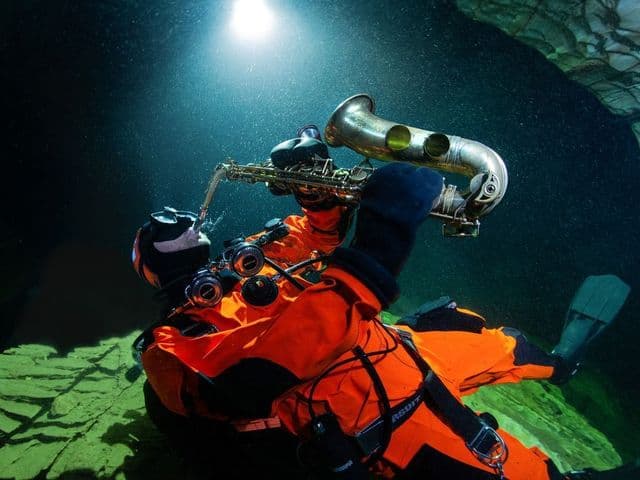
- Hakon Erlandsen, Norway’s famed jazz musician, held a concert inside Pluragrotta, an underwater cave 240 kilometers south of Bodo. Visitors and musicians had to scuba dive inside the cave to take part.
- An estimated 4,500 people went to Breivika, the city’s beach, to watch the Midsummer Mystery, a folk festival featuring Sami culture and games from Norway’s indigenous people.
- The Stormen Concert Hall, built in 2014, had a Bryan Adams concert among a long string of special musical events.
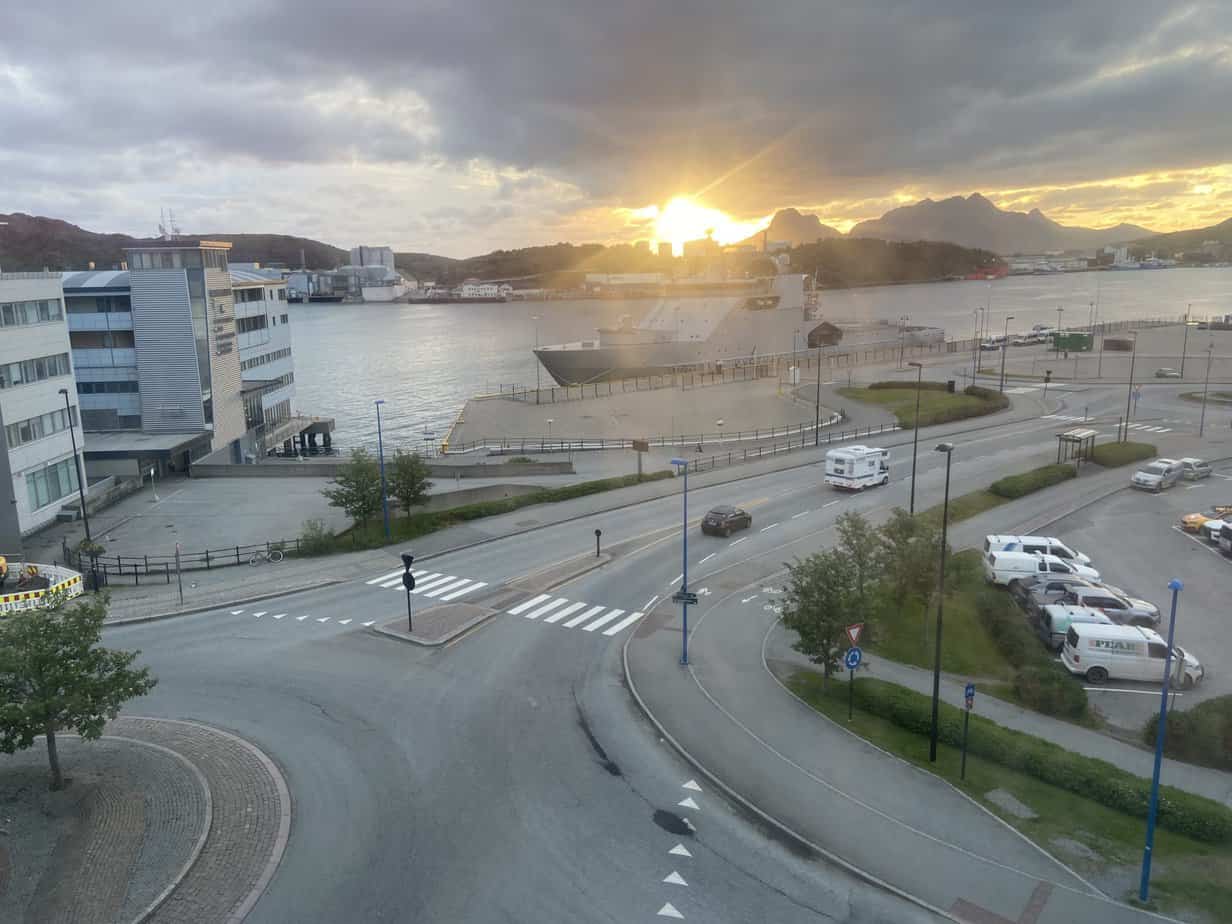
Getting there
I came for more than just to cool off. I came to write about it for BBC.com. I’ve had more comfortable assignments but not many prettier. This corner of what they call the High North truly is a spectacle of Mother Nature at her best, where the raw beauty of the top of the globe softens in summer’s continual light.
Bodo isn’t difficult to reach. I flew SAS three hours from Rome to Oslo. After a 5 ½ layover, I flew 1 hour 25 minutes to Bodo. City officials told me the airport is so convenient, I could walk to my hotel. For now. They’re building a bigger airport due to open in 2026.
I took a taxi and told the cabbie I was staying at the Smarthotel, one of the new hotels built for the year’s celebration. He told me I’m lucky. The city has been booked for months and looked packed through the summer.
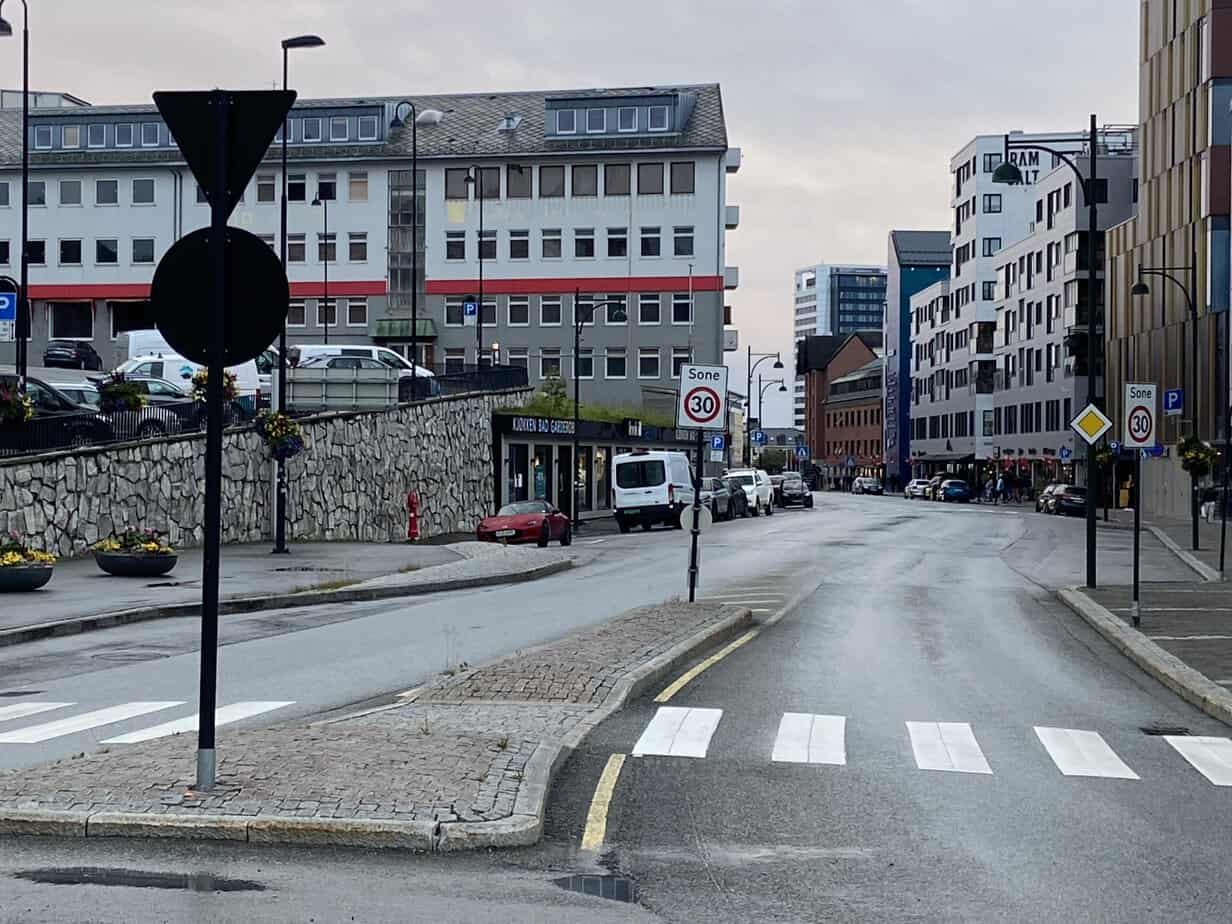
I landed at 9:15 p.m. and as we drove to my hotel right on the Norwegian Sea it felt like 9:15 a.m. in New England. The midnight sun sparkled off the sea, illuminating the luscious mountain landscape beyond like floodlights.
I went for a walk around the quiet, pleasant downtown. I heard music coming out of the back of venues. People rode bikes. The temperature was in the high 50s. I looked at my watch. It was 11:45 p.m. Bodo (pronounced BO-da) has always bathed in the light of the midnight sun from early June to mid-July.
Walking home at midnight, not one street light was on. Yet looking across the sea at distant mountains discombobulated my senses. I felt like I’d fallen through a time warp. To block out the light at night, my hotel has curtains just slightly thinner than iron gates.
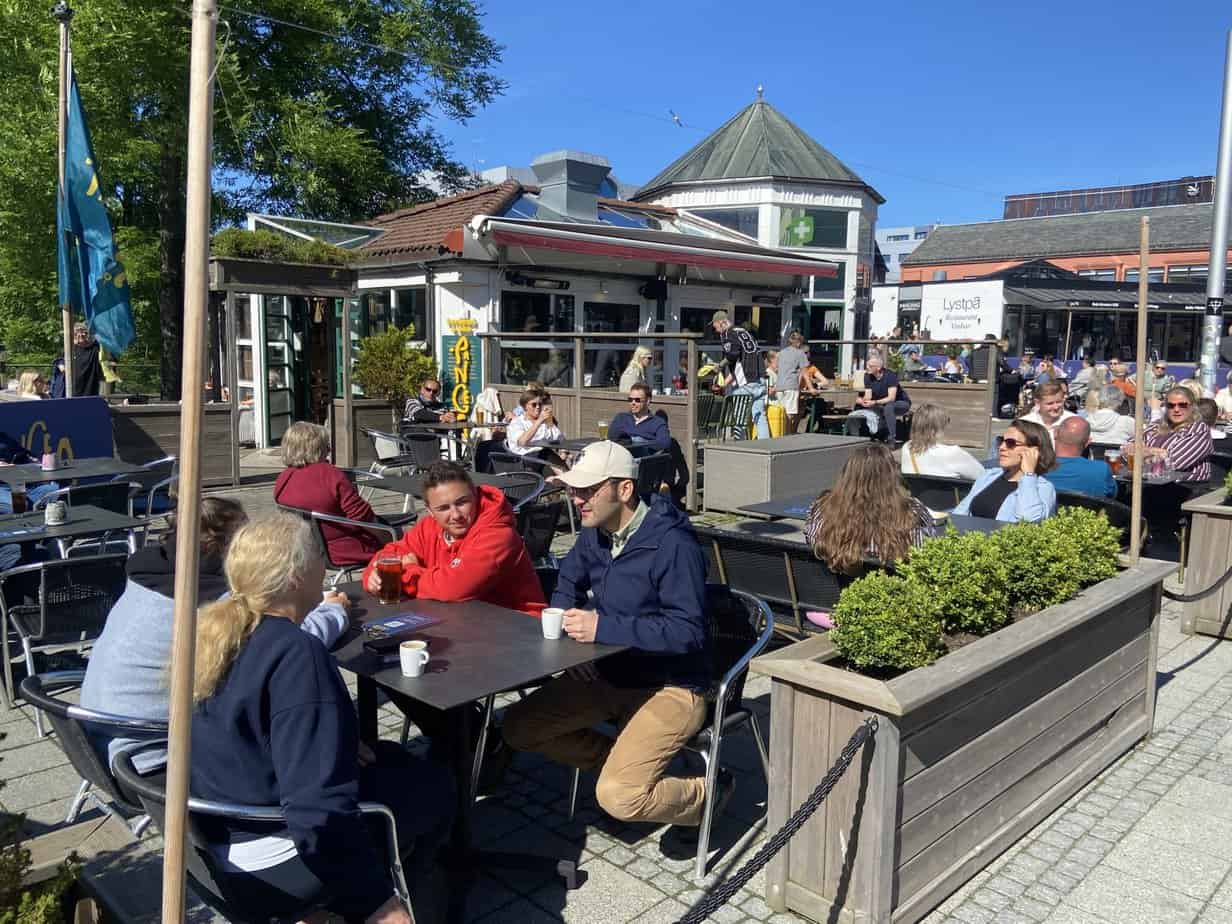
Bodo’s rise from obscurity
Pangea is a hip, upbeat bar-restaurant on Storgata, a long pedestrian street connecting old town Bodo with an even hipper concert hall and a postcard-pretty port on the sea. Visitors sit at Pangea’s outside tables with views of the sea eating Cuban sandwiches and drinking Bodo’s Northlands beer.
Simen Steinbakk, Pangea’s early 30s restaurant manager, spent six years traveling around the world. He has lived in Miami, Orlando and New York and worked for Disney Cruise Lines. He grew up in Bodo when it was the pit of Norwegian jokes.
“The city has grown up,” Steinbakk said. “There are a lot more people, a lot more international people as well. A lot of the people who moved away from Bodo are starting to migrate back. You get people bringing in new industries. You get people bringing in new passions and everything.
“I always knew I wanted to come back to Bodo.”
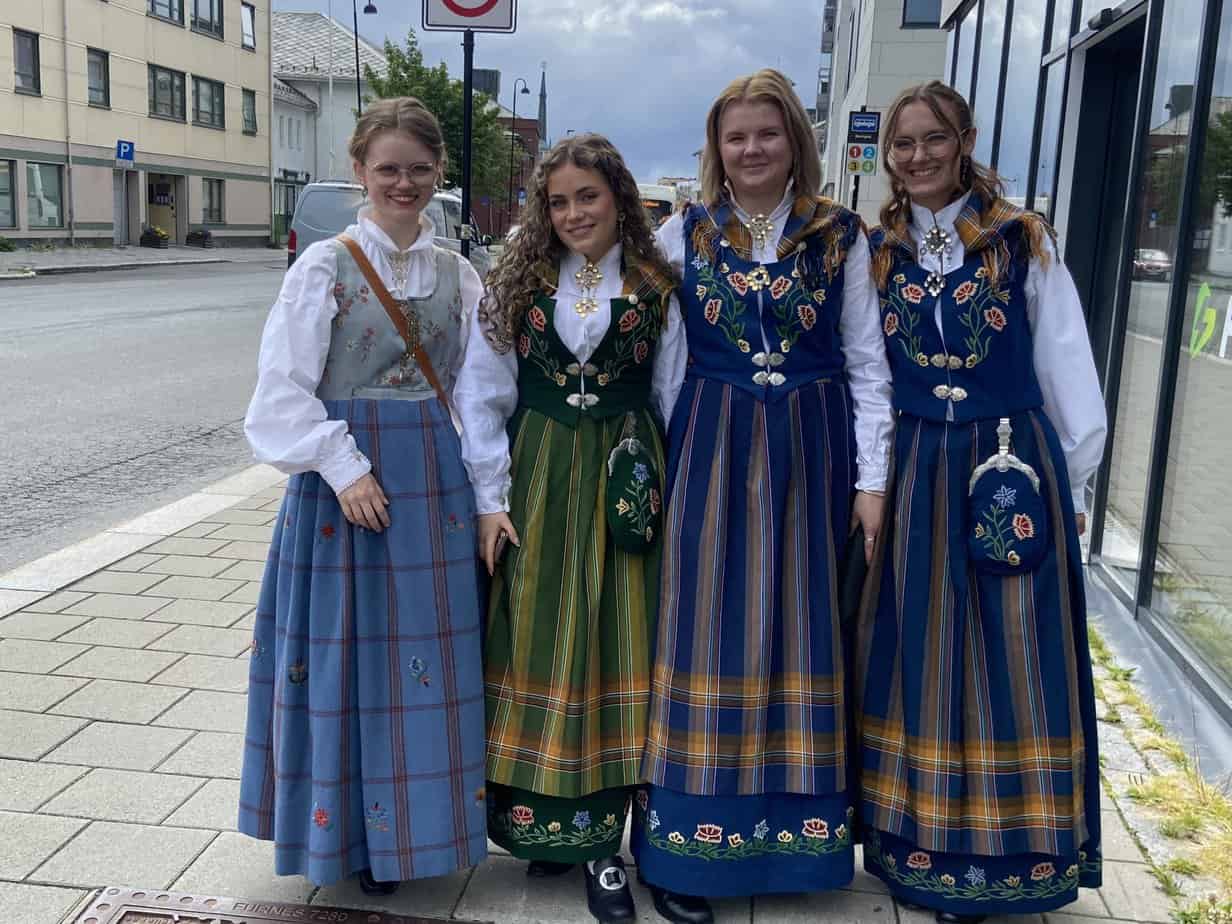
I asked him what it was like growing up here.
“Don’t use the word ‘boring.’ ‘Sleepy’ is a better word,” he said. “There were less dining options, less cultural offers. We had one cinema. Either that or go to one of the restaurants that served exactly the same food as all the other restaurants did.
“Now we have people just really passionate about everything they do in restaurants and entertainment and cultural options. It’s different. Back then we had people who worked at jobs just to work a job. Now we have people who actually make restaurant a career, like myself.”
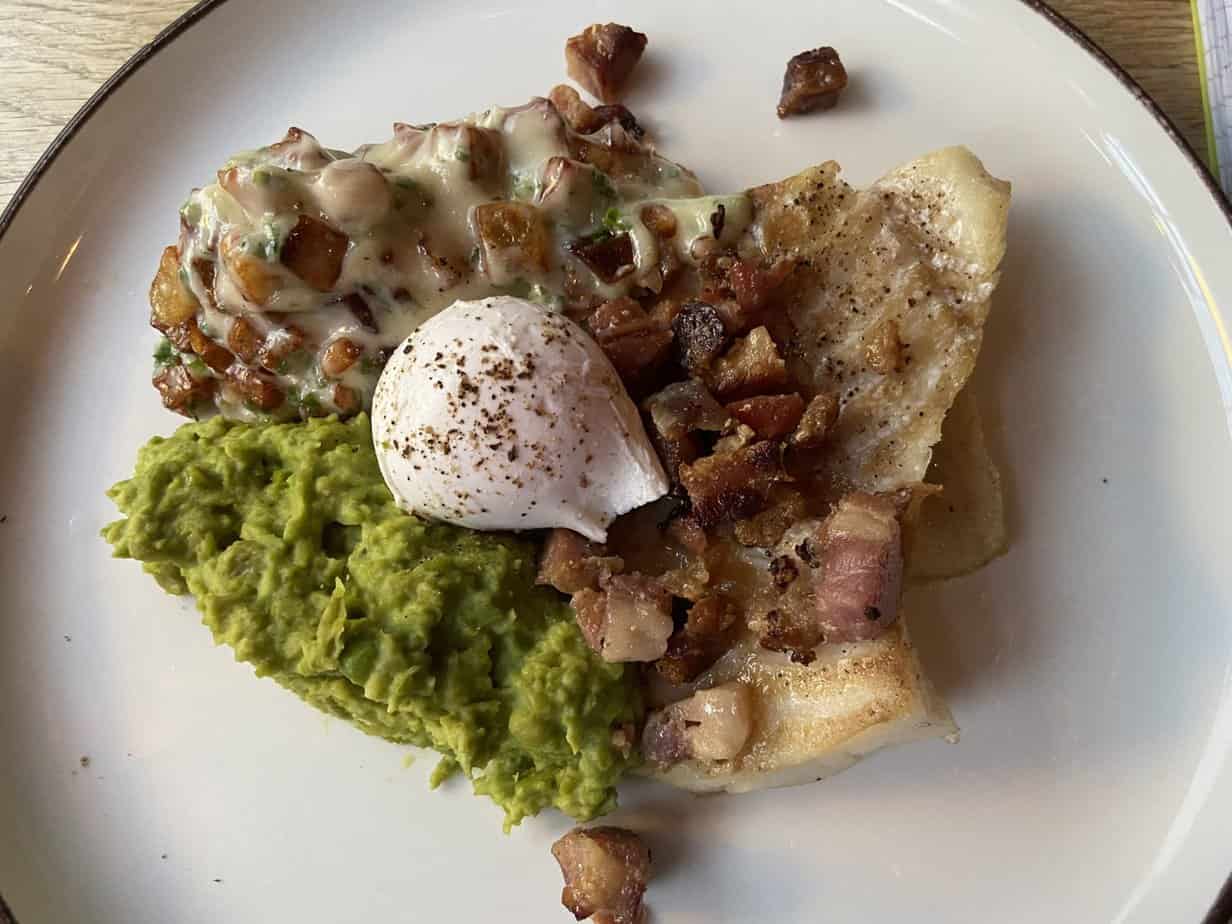
A short stroll down Storgata reveals how far Bodo has come since 3,500 homes were destroyed by a German air raid in 1940. Even for a first-time visitor it came across as a place to hang out for a few days and not just to make a flight connection. Inside the Glasshouse mall is Bjork, an Italian-leaning seafood restaurant where I had torrfisk, or “stockfish,” the light, white Norwegian fish, similar to cod that has helped fuel the nation’s economy for 400 years.
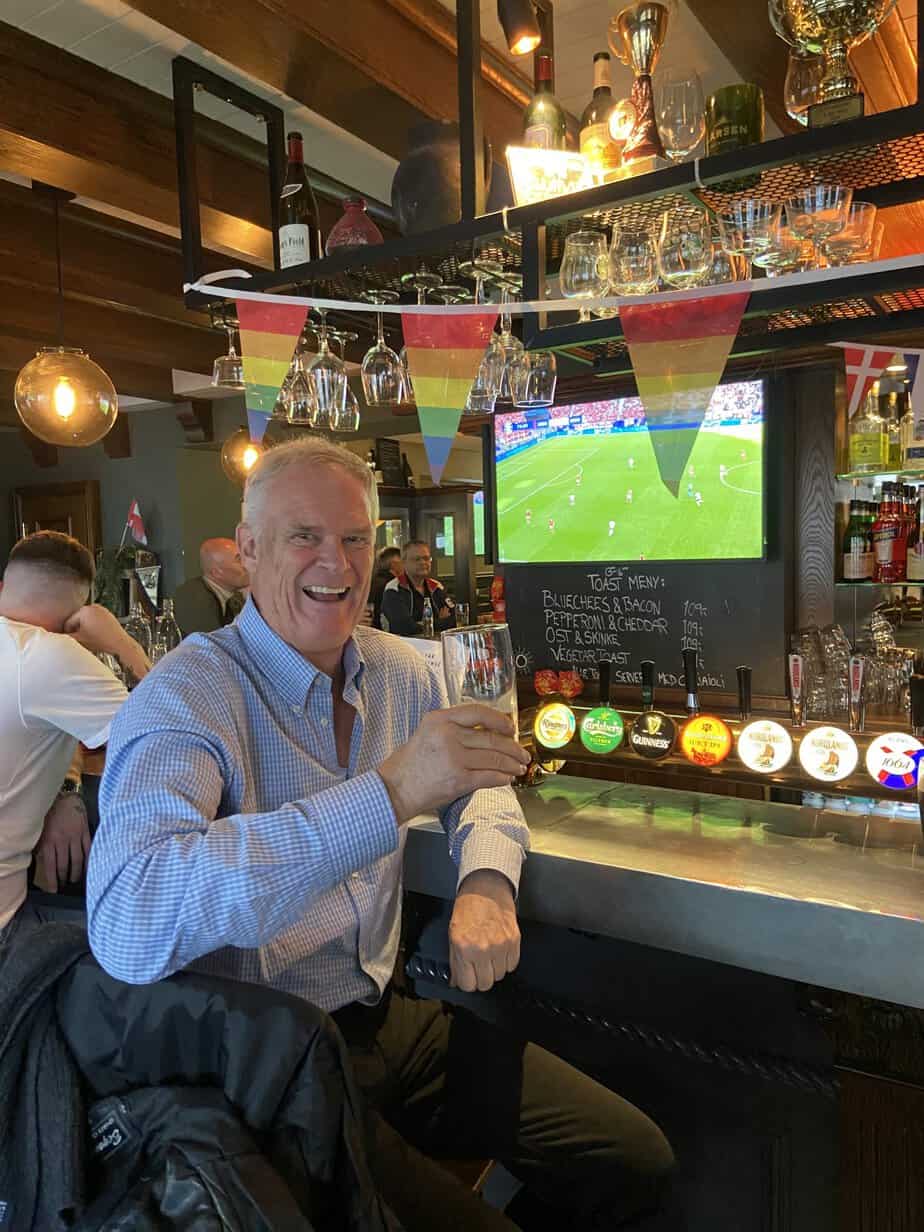
I walked out the other side of the mall to Sportbarden. Bodo’s sports bar is where I drank €13 Northlands and listened to locals slam Norway’s soccer team for not being in the European Championships playing on the many TVs around us.
Farther down the road I came to the beautiful Stormen concert hall. A snow white building built in 2014, it is adjacent to a library featuring floor to ceiling windows with dreamy views of the sea and boats floating in the harbor. In 2021 it built Svommehallen Scene, where the Norwegian pop group A-ha (“Take On Me”) recorded its last album.
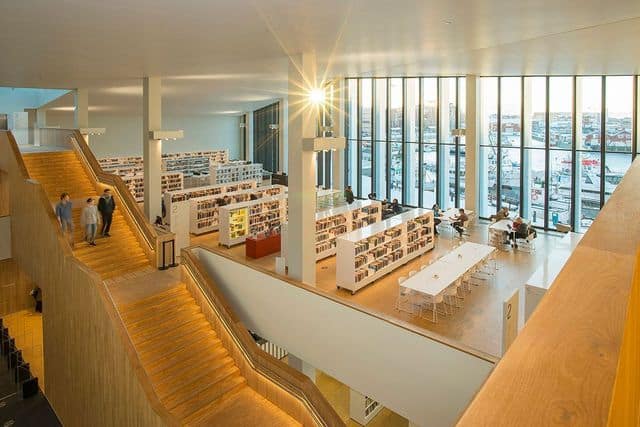
Bodo soon began attracting IT businesses. Besides the airport where they’re freeing up 3.5 million square meters of land for development, a new stadium is planned for 2029 to house FK Bodo/Glimt.
The city took its 120-year-old mustard-colored Bodo City Museum and turned it into a giant Sami exhibit featuring clothes, art and tools made by the Sami who number 40,000 in Norway and still live in and around Bodo.
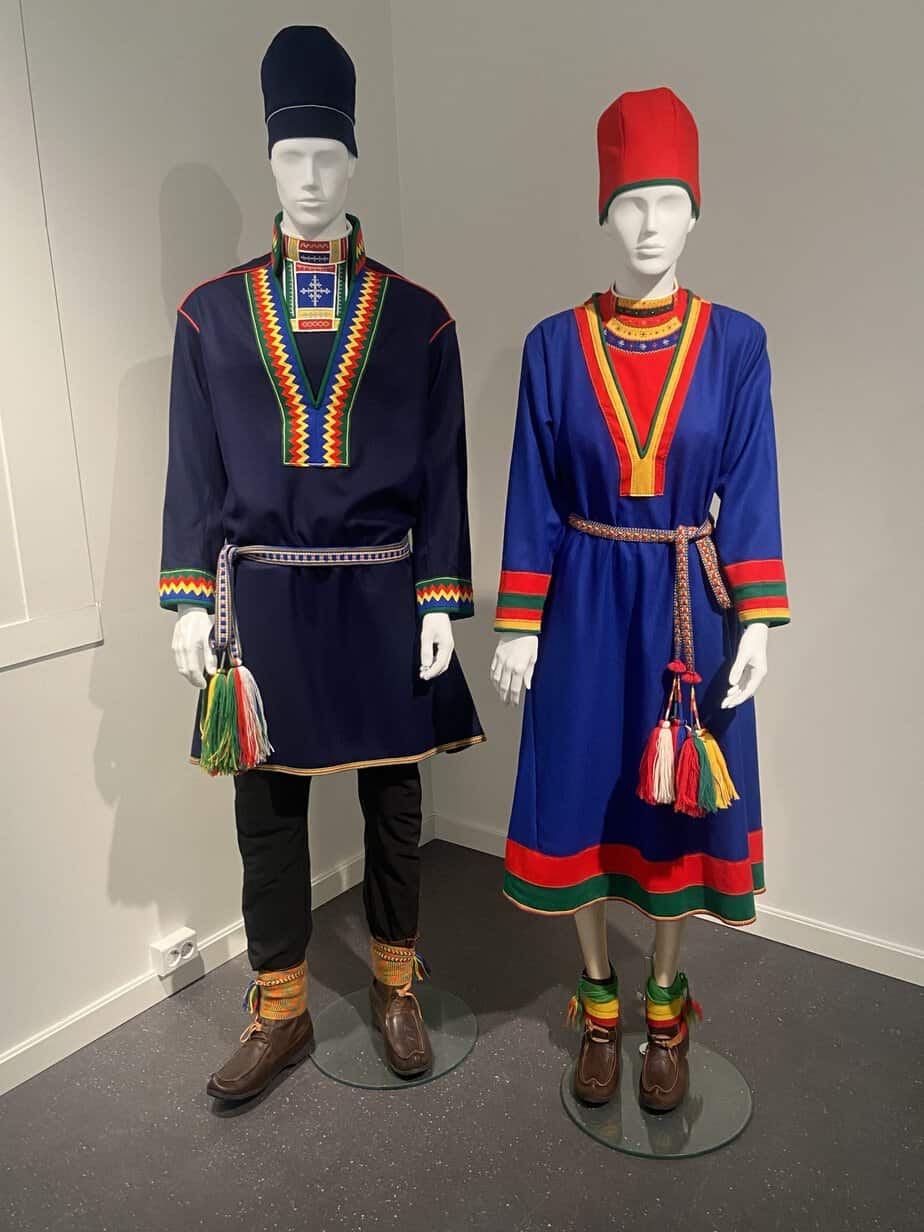
As of June, the number of visitors was up 25 percent over the same period last year, according to Innovation Norway and Statistics Norway. In the last 18 years, Bodo’s population has jumped 20 percent.
“I was a student in Tromso,” said Hanne Kristin Jakhelin, who moved to Bodo in 1998 and owns the consulting firm Muskat AS. “Coming from a student city, Bodo was very quiet. Bodo had empty streets. They had quite a lot of not-very-taken-care-of buildings. There wasn’t much to do for young people.
“Now it’s totally different. Bodo is now a nice city. It’s grown a lot. Now you go out and you can always find someone you know. Now there are people.”

Bodo mayor
My first interview was with Mayor Odd Emil Ingebrigtsen in his office on the top floor of the Bodo Town Hall, built in 2019 as part of the town’s rejuvenation. A pin with the town symbol, a bright orange midnight sun, stuck to his lapel. Ingebrigtsen grew up in Bodo, prowling his parents’ bookstore and oblivious to the sleepy town that apparently bored people around him.
Mayor since October, the 59-year-old has shepherded Bodo’s progress that began long before he took office.
“It’s been a big transformation here,” he says. “Just in 10-12 years it’s a totally different scheme. You get a lot of fresh seafood. Twelve years ago it could be a problem because they all served pizzas and kabobs and hamburgers.”
Everyone who lived here knew it had potential. Bodo is the capital of the Nordland region which covers nearly 500 miles along Norway’s northwest coast. With only 240,000 people, it is one of the least populated areas in Europe with only seven people per square kilometer.

But with its deeply carved fjords, nine national parks and on the line of Norway’s longest train ride called the Arctic Circle Express, Bodo was viewed as the perfect base for Arctic exploration without dogsledding over the pole.
Tired of being the butt of not funny jokes, Bodo came up with a strategy.
“We call it ‘Artic,’” Ingebrigtsen said. “It’s wordplay between Arctic and articulate. The thing is to get people to meet and hopefully people are proud of their city and their regional county here. And also get a little bit attention from Europe. So when people meet, things can happen.
“Magic things can happen.”
Bodo’s rise from Scandinavian obscurity ironically began in 2012 when the Norwegian government decided to close Bodo’s military air base. That cost the city 1,000 jobs. Bodo didn’t pout. It pounced.
“I usually quote Churchill,” Ingebrigtsen says. “Never miss a good crisis.”
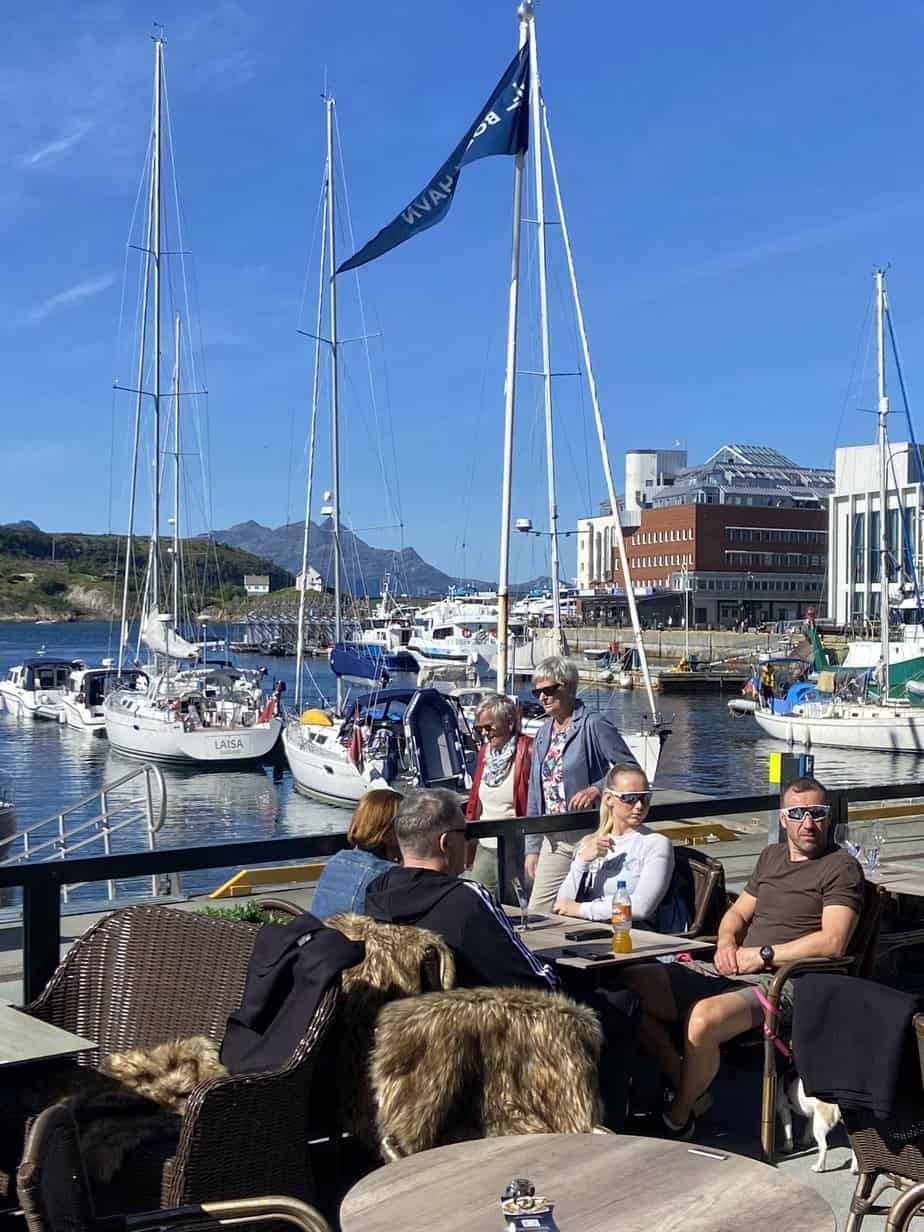
Starting in 2014, the city built Stormen and its library, Svommehallen Scene and the Jekt Museum, filled with the traditional fishing boats that carried stockfish up and down the coast.
Awards poured in. Svommehallen won the Norwegian Award for Building Design. The Jekt Museum won this year’s Norwegian Museum of the Year award. In 2016 Bode was named Most Attractive City by Norway’s Ministry of Local Government and Regional Development.
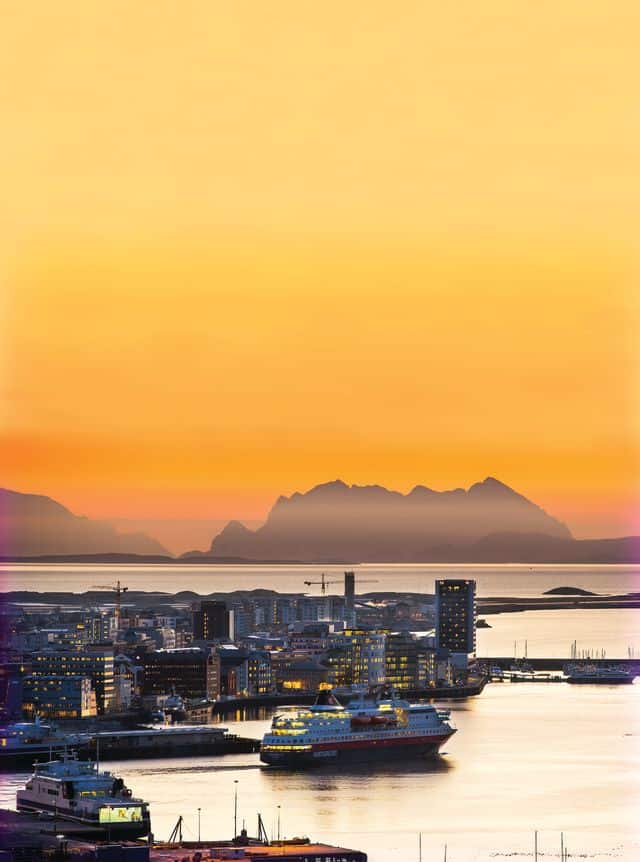
Roaming a blossoming, optimistic city surrounded by such unspoiled nature, I found it difficult to grasp the threat so close. But it’s here. The day I met Ingebrigtsen, the prime ministers of Norway and Sweden, the president of Finland and all their defense ministers gathered in Bodo to discuss their menacing neighbor.
Russia continues its war in Ukraine while surrounding nations worry about what could happen next. Bodo is a good meeting place. Near the 120-mile-long Norwegian border, Russia’s Kola Peninsula has ballistic submarines and massive storage for nuclear warheads.
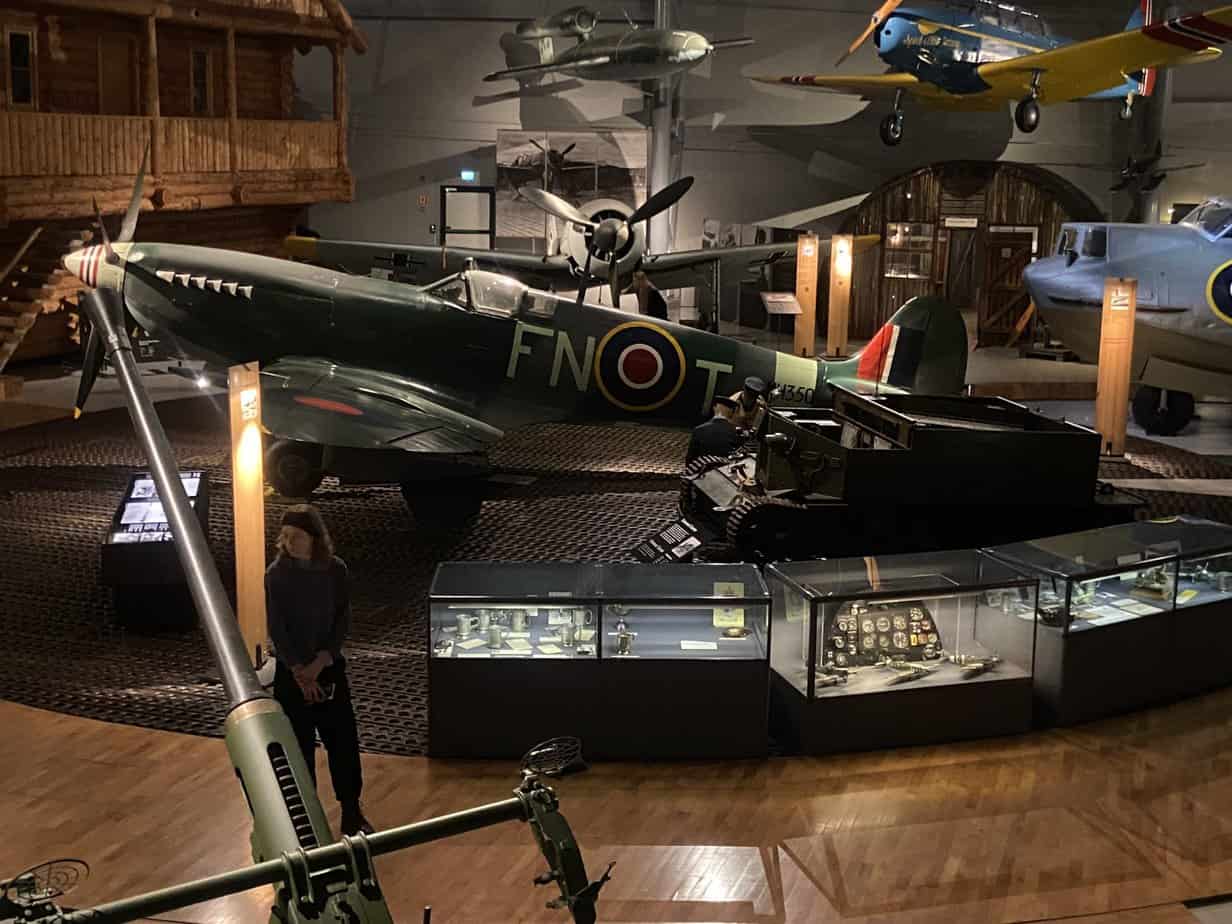
In the city’s spectacular Norwegian Aviation Museum, which houses 60 planes in a museum covering 10,000 square meters, the new Cold War Hotspots project displays videos of citizens from Germany, Estonia, Scotland and Denmark discussing their fears of a new Cold War.
“We are not worried but we are realistic,” said Ingebrigtsen, wearing a Ukraine T-shirt. “We can’t really trust them and we must beat them in Ukraine. In a way, we are in a war-like situation.”
For those who happen to be above the Arctic Circle from now until the end of the year, some upcoming events include: Through Oct. 19 – I Enter the Landscape From the North art exhibit from Arctic artists. Oct. 4 – Concerts by Norwegian rock band September When and Bodo’s black metal band, Iskald. Nov. 6-9 – the Bodo Filmfestival. Nov. 11-17 – Nordland by Light festival.
Here is a complete list: https://kulturkalender.bodo2024.no/?fromDate=2024-10-01&toDate=2024-12-31&culture=en&category=&area=.
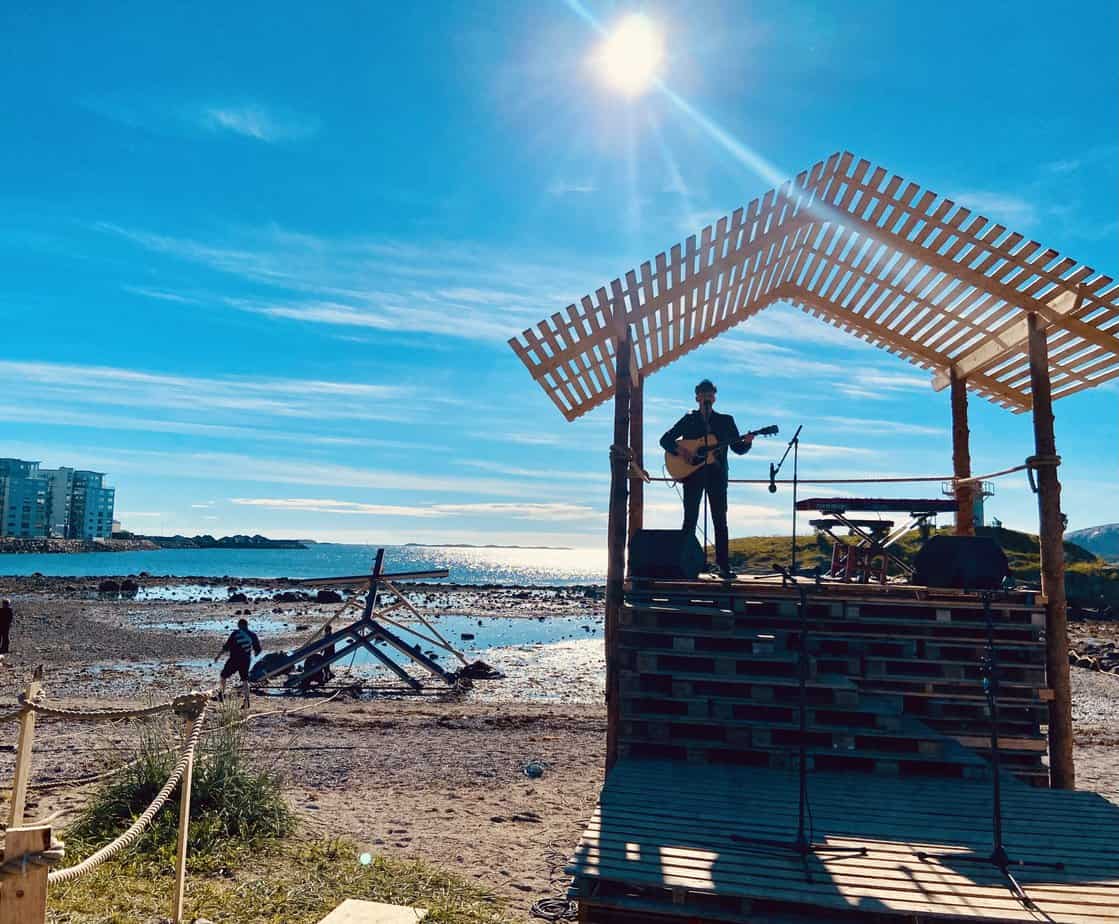
If you’re thinking of going…
How to get there: SAS and Norwegian Airlines have numerous round-trip flights from Oslo starting at $145 in the fall.
Where to stay: Smarthotel, Sjogata 30, 47-41-536-500, https://smarthotel.no/no/bodo, post.bodo@smarthotel.no. New hotel right across the street from Norwegian Sea. Big rooms with spacious lobby. The front desk doubles as a bar. I paid €515 for four nights in June.
Where to eat: Bryggerikaia, Sjogata 1, 47-75-525-808, https://www.bryggerikaia.no/, poste@bryggerikaia.no, 11 a.m.-11 p.m. Monday-Saturday, noon-10 p.m. Sunday. A 10-minute walk from the hotel, Norwegian fish restaurant opened in 2005 right on the harbor. Mains start at about €27. Try the Nord-Norsk Fiskesuppe. Fish soup with big chunks of fish and shrimp.
When to go: In July and August temperatures range from 50-60 and midnight sun starts in early June. In January and February temperatures are 25-34. January averages about three hours of sunlight a day.
For more information: Bodo turistinformasion, Dronningens gate 15, 47-75-548-000, 8 a.m.-3:30 p.m. Monday-Friday.

